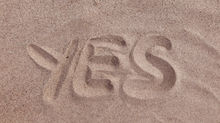Wit: when, where and why
- bb1982
- Jun 12, 2014
- 2 min read
Updated: Jun 5, 2024
Clients often ask for witty copy. But when is wit right for a brand?
So what is wit? Before we can discuss it, we need to know what ‘it’ is. Let’s say what we understand it to be. Wit starts out as surprise and ends as entertainment. It’s the unexpected. It’s turning something old into something original. It’s sharpness and catching people slightly off guard with a nice turn of phrase or a playfully intelligent twist.
Anyone can be witty
In terms of witty copy, we copywriters are looking to achieve that wry smile. We don’t want our clients or customers to be laughing their heads off while reading our copy. But we do want them to be wryly amused.
Wit and humour – what’s the difference? Humour is subjective, while wit is universal. Humour has far more power to annoy people, especially the politically correct and those at whose expense a joke is told. Wit is milder and doesn’t tend to offend.
Innocent Drinks’ copy is witty. But you wouldn’t call it funny, would you? It brings a smile to your face but it doesn’t really say anything. There’s no agenda or argument. And nothing or no one is being put down.
So why don’t all brands do wit? Wit is appropriate for Innocent Drinks because it’s in an inoffensive product category - juices. If a bank had copy like that, you might have trouble taking them seriously. If they’d just turned you down for a loan, you’d be even more annoyed with them if they then tried to be witty. But there are no hard and fast rules here. Ryan Air does offensive humour and they fly aeroplanes, which is a pretty serious business when they go wrong.
Warmth vs wit First Direct is a bank. But they do warmth, charm and human, rather than witty.
“You’re the jam in our doughnut.”
“You're the pickle in our ploughman's.”
They admit the customer might be sceptical (they are a bank after all) so they present negative points, but they do so in a self-deprecating way.
“Terms and conditions apply (don’t they always?)”
This all works well because it supports their claim that they’re different to normal banks. In their own words:
“Funny, we’re a bank, but we don’t like banking.”

When wit works… The Economist’s now classic advertising campaign is an example of when wit works. The posters all follow the same theme. They set out to flatter the target market with a witty joke that takes some intelligence to understand. There’s that fit with the brand again.
When doesn't wit work… Failed wit, like a joke that tanks, is abominable. Hive by British Gas tries to be cute but isn’t. Perhaps they’re trying to appeal to too many people with their jingles.
Wit has to be authentic Hive shows an organisation can’t just ask for wit. You can’t slap it on like paint. Just like anything else in branding, it has to be based on real brand attribute. Authenticity is essential.
Wit takes effort
Wit is hard to deliver consistently. So there has to be commitment and the resources to fund that continual effort. And that’s where us copywriters come in. We get our wits out all the time.

Barnaby Benson
Author
Date posted: 12/06/2014













































Comments